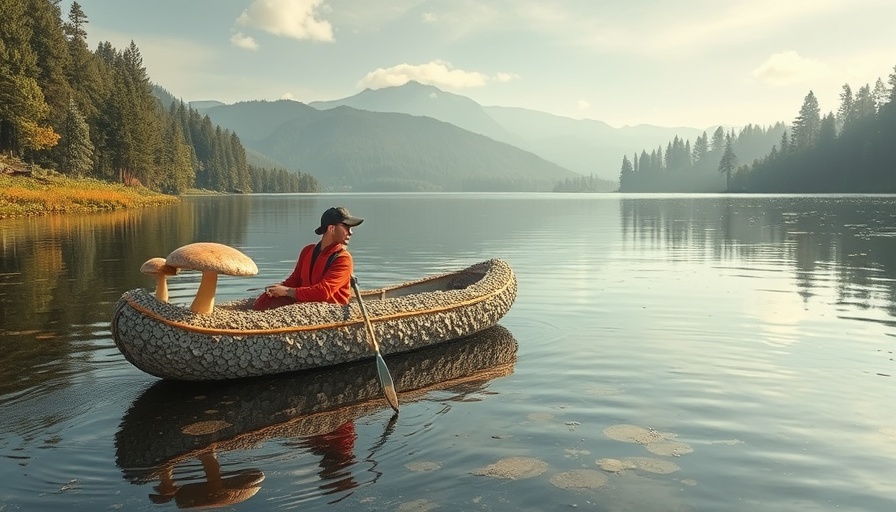
Exploring the Intersection of Art, Innovation, and Sustainability
On a clear day off Catalina Island, an artist-turned-explorer, Sam Shoemaker, set out to prove the potential of mycelium in an extraordinary way: by paddling 26.4 miles in a kayak entirely crafted from mushrooms. This recent journey isn't just an adventure; it's a bold statement on the future of sustainable materials in aquatic recreation and beyond.
The Maiden Voyage of a Mycelium Kayak
Shoemaker's kayak, notable for its bumpy, brown-yellow texture, symbolizes a groundbreaking shift in how we think about materials. Unlike traditional kayaks made from plastic, Shoemaker's vessel was grown rather than manufactured, showcasing the incredible versatility of fungi. As he braved the choppy ocean waters, Shoemaker not only faced the challenge of the sea but also became an ambassador for eco-friendly practices in a world increasingly conscious of environmental sustainability.
His thoughts on the experience encapsulated the blend of exhilaration and vulnerability, as he described it as a 'psychedelic experience' while being followed by a fin whale. This encounter underscored the profound connection between humans and nature—an essential element in today’s dialogues about environmental responsibility.
Pioneering Sustainable Solutions with Mycelium
Much of the conversation around sustainable materials centers on creating alternatives to plastics, which are prevalent in every aspect of modern life, including sports and recreation. Mycelium, the thread-like networks of fungi, represents a promising solution. The material can not only reshape how we build products but also offer an eco-friendly path forward for industries that have long relied on unsustainable resources.
Shoemaker, along with his mentor Phil Ross, who co-founded MycoWorks, advocates for 'AquaFung'—a term defining mycelium’s potential in watercraft. The concept reflects a growing realization within both artistic and scientific communities that innovation can stem from natural rather than synthetic resources. It positions mycelium not just as a mere alternative, but as a fundamental component in designing the future.
The Broader Impact of Mycelium-based Products
As more people embrace sustainable living, Shoemaker’s efforts highlight the need for alternatives that fit seamlessly into daily life. Mycelium's potential does not stop at kayaks; it spans to items such as furniture, clothing, and even biomedical equipment. These products do not just reduce waste; they transform the consumer experience, integrating sustainability with style.
Furthermore, using natural materials speaks to a growing consumer base eager to support eco-friendly practices while enjoying high-quality design. Furniture made from mycelium leather, for instance, offers elegant solutions that prioritize both form and function without harming the environment.
Join the Revolution of Fungal Innovation
Shoemaker’s story shows us that creativity and environmentalism can go hand in hand. The integration of mycelium into recreational and home products mirrors a broader ethos among creators and consumers alike: the need to care for our planet while enjoying life’s pleasures. As awareness grows around the importance of reducing plastic waste, innovations like the mycelium kayak will move from niche to necessity.
This budding movement calls on you to explore and support sustainable choices in your daily life. Whether it's choosing eco-friendly furnishings or embracing new artistic paths, there's a role for everyone in pioneering this change.
Conclusion: The Future is Mushroom
The voyage of Sam Shoemaker is not merely about crossing waters; it is a call to arms for everyone to consider alternative materials and sustainability in their life choices. As we learn more about the ecological impact of our decisions, let's be inspired by such innovative creations and advocate for a future where art, science, and sustainability thrive together. Join the conversation about how you can engage with sustainable living in your own home.
 Add Row
Add Row  Add
Add 





Write A Comment